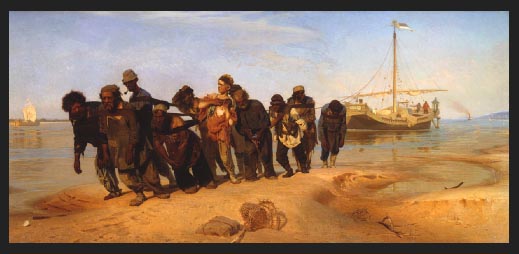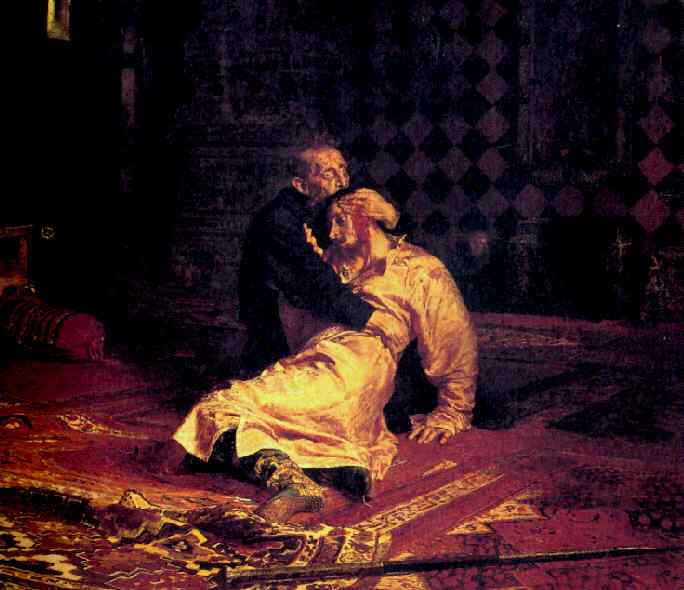Ilya Repin (1880-1883)

Barge-Haulers on the Volga (The Volga Boatmen) (1870-73)
Son of a peasant, Repin knew the hardships of lower class labor. In "Barge-Haulers on the Volga," the first completed painting after leaving the Academy, Repin powerfully depicts the fatigue of physical labor and poverty of common working class citizens. The Haulers represent the people of Russia of all different ages, nationalities, and social sectors. An interpretation of this can be viewed in revolutionary Marxist thinking as a cohesive society of the proletariat. Although Repin might not have been trying to teach Socialism to the viewer, the sight of such hardship does make the viewer realize that something in the system must change to alleviate their struggle and poverty. This painting can also be seen as a celebration of the working class. The working class viewer may have looked at this and realized more so than before, the great value of his or her role in society. In the middle of the pack, a young man lifts his head in defiance. He represents the need for the people to stand up against the system to fight against hardship and poverty.

Tsar Ivan IV with the Body of his Son Ivan on November 16, 1581
(1881-85)
The subject matter of this painting is the tragic episode of Russian history when the Tsar Ivan the Terrible murdered his son. This moment takes place after the Tsar fatally struck his son out of madness. This can be interpreted as an indirect criticism of the regime by showing the rashness of its ruler. This showed the people that the authorities that rule over them all the way up to the supreme leader have the tendency to be corrupt and even "Terrible" as in this case. This painting was banned by authorities.